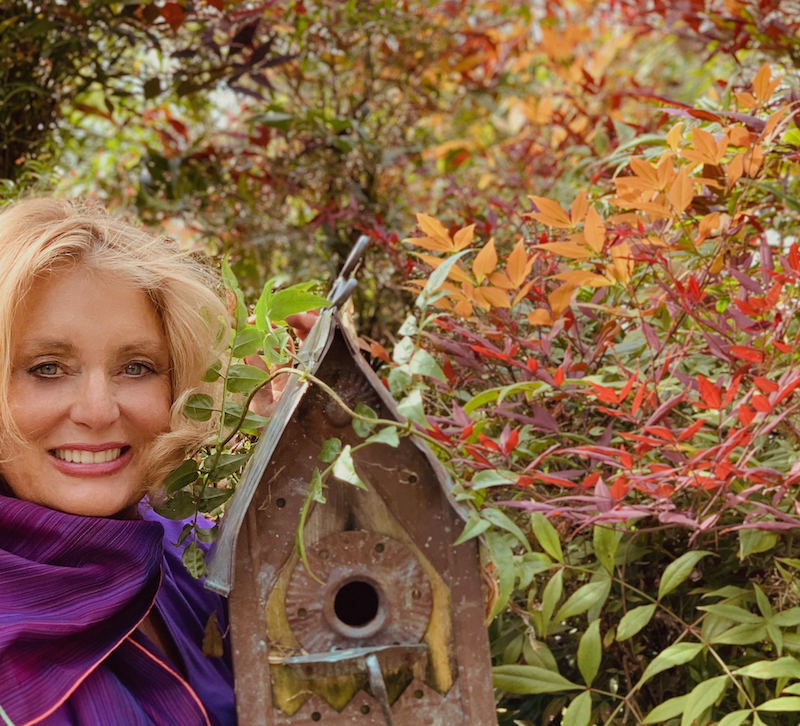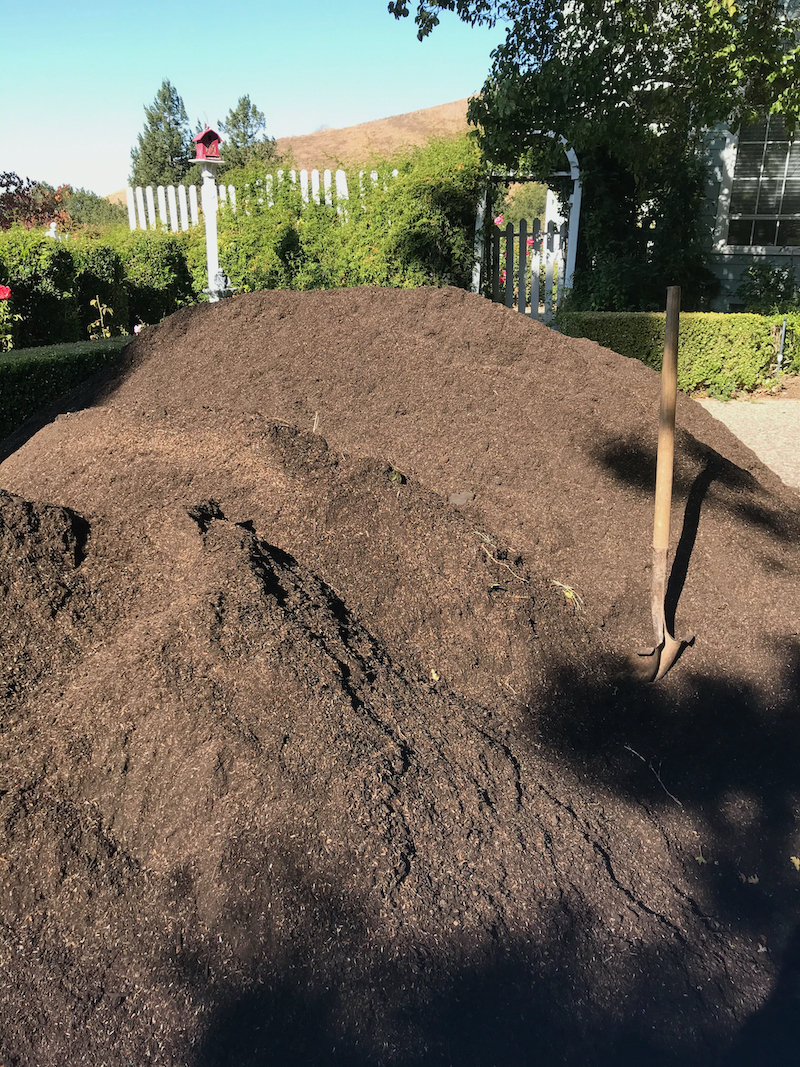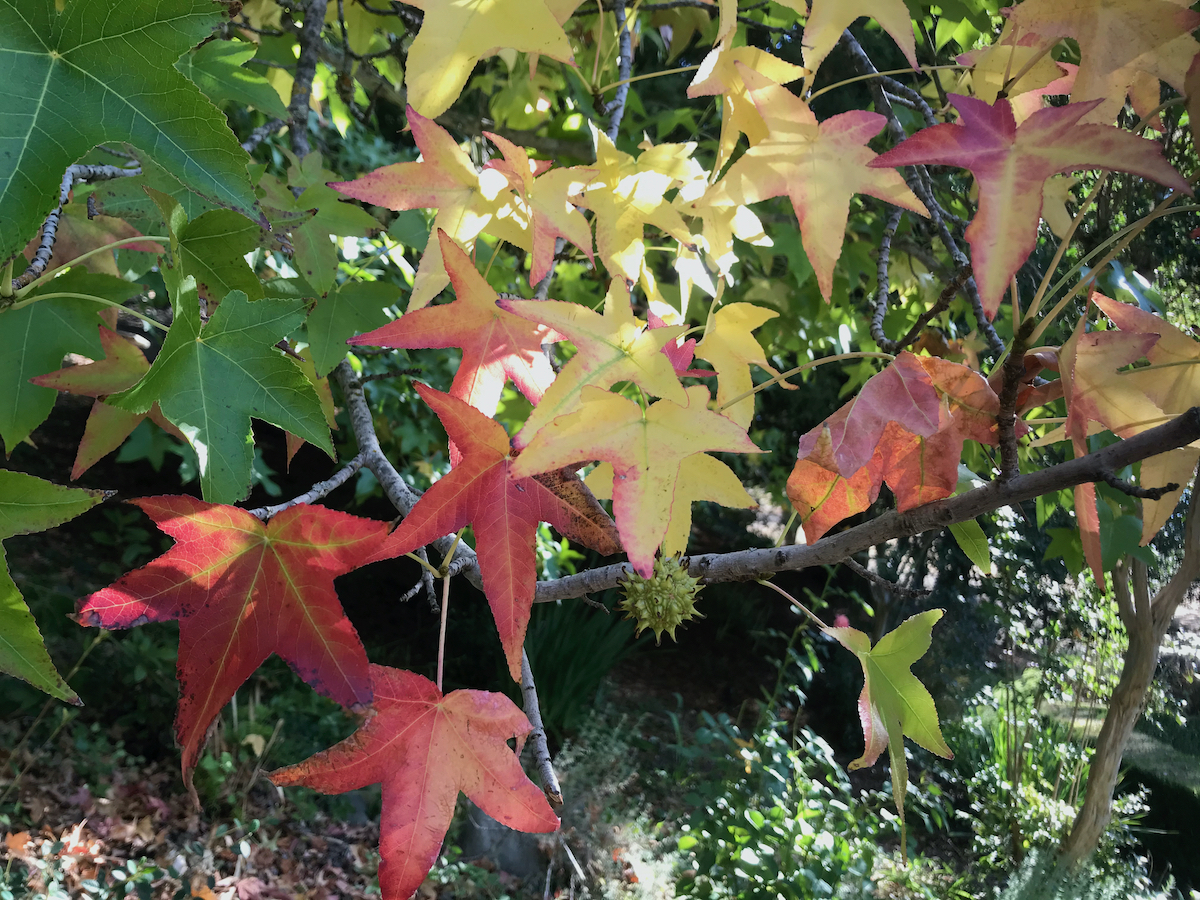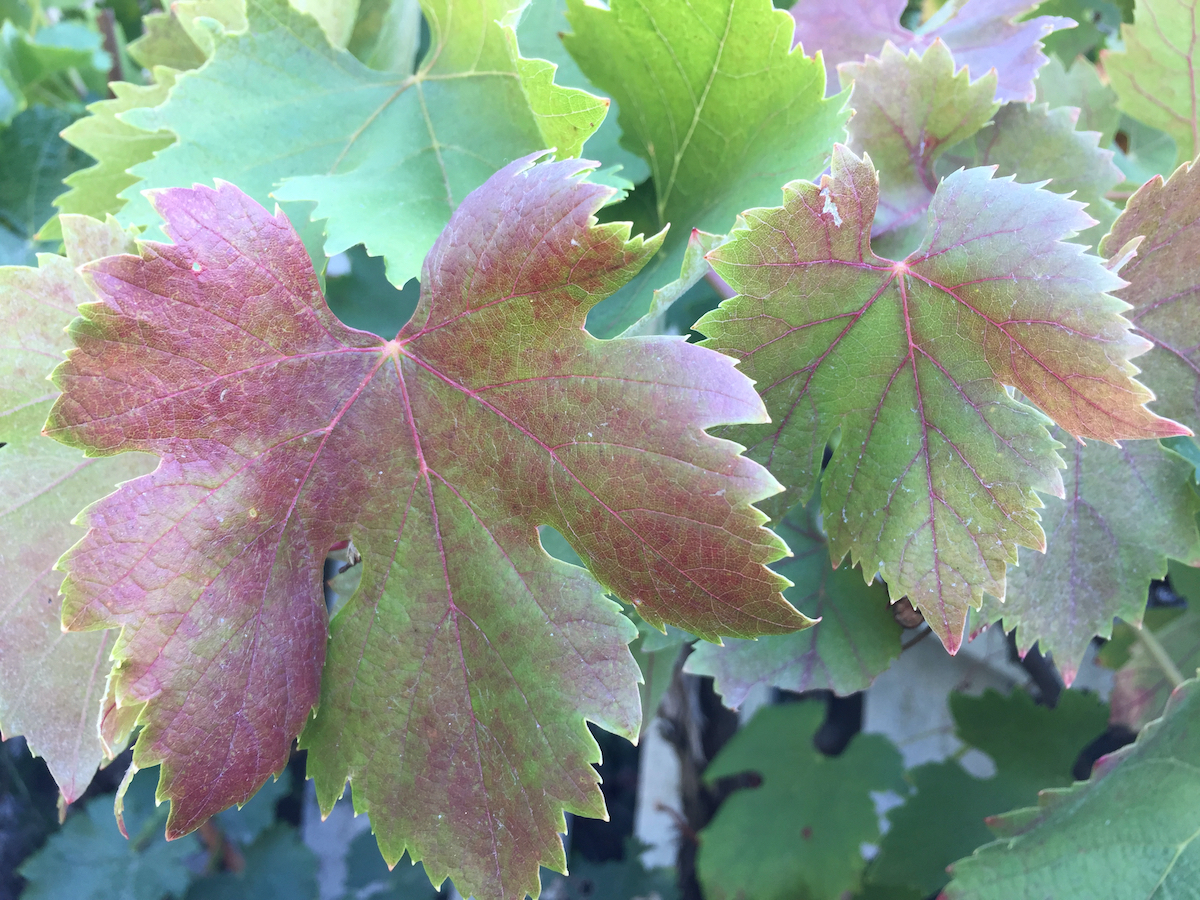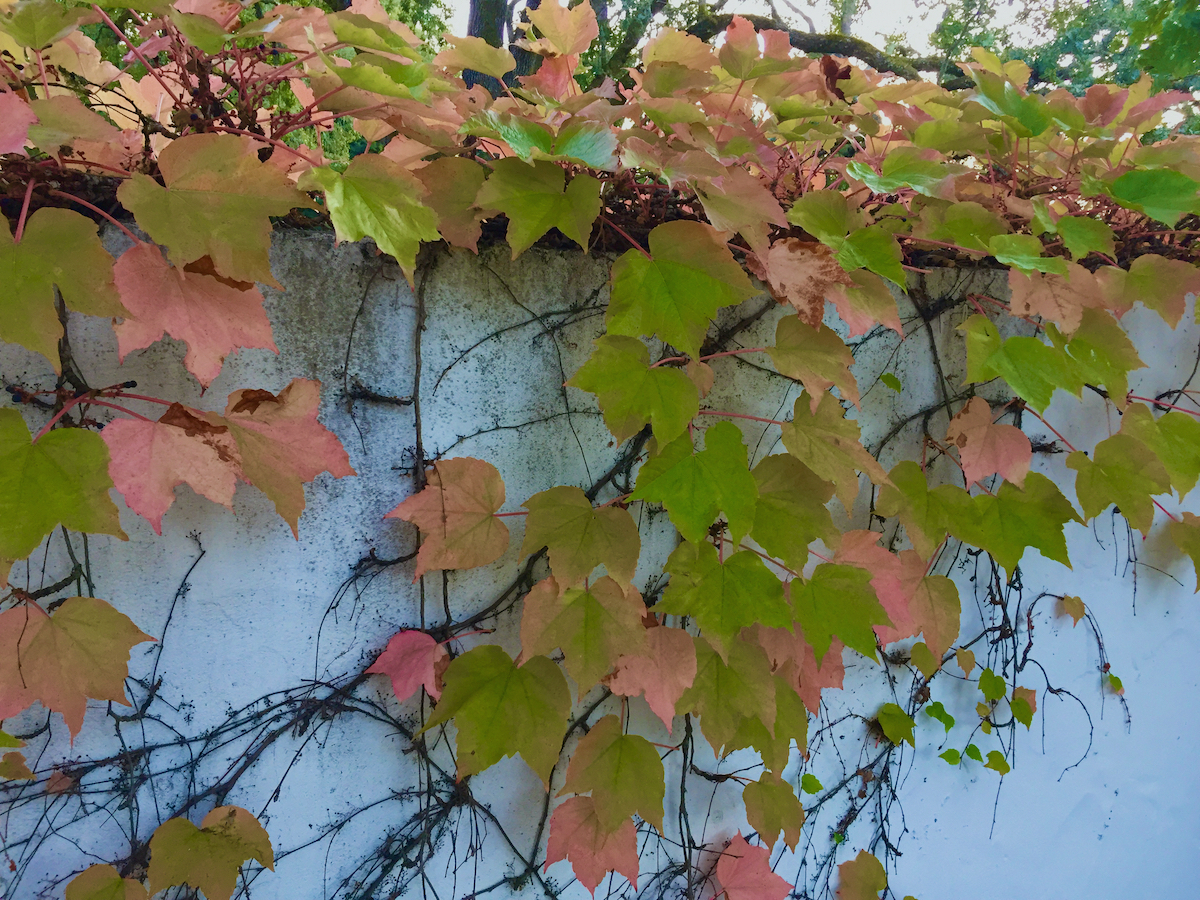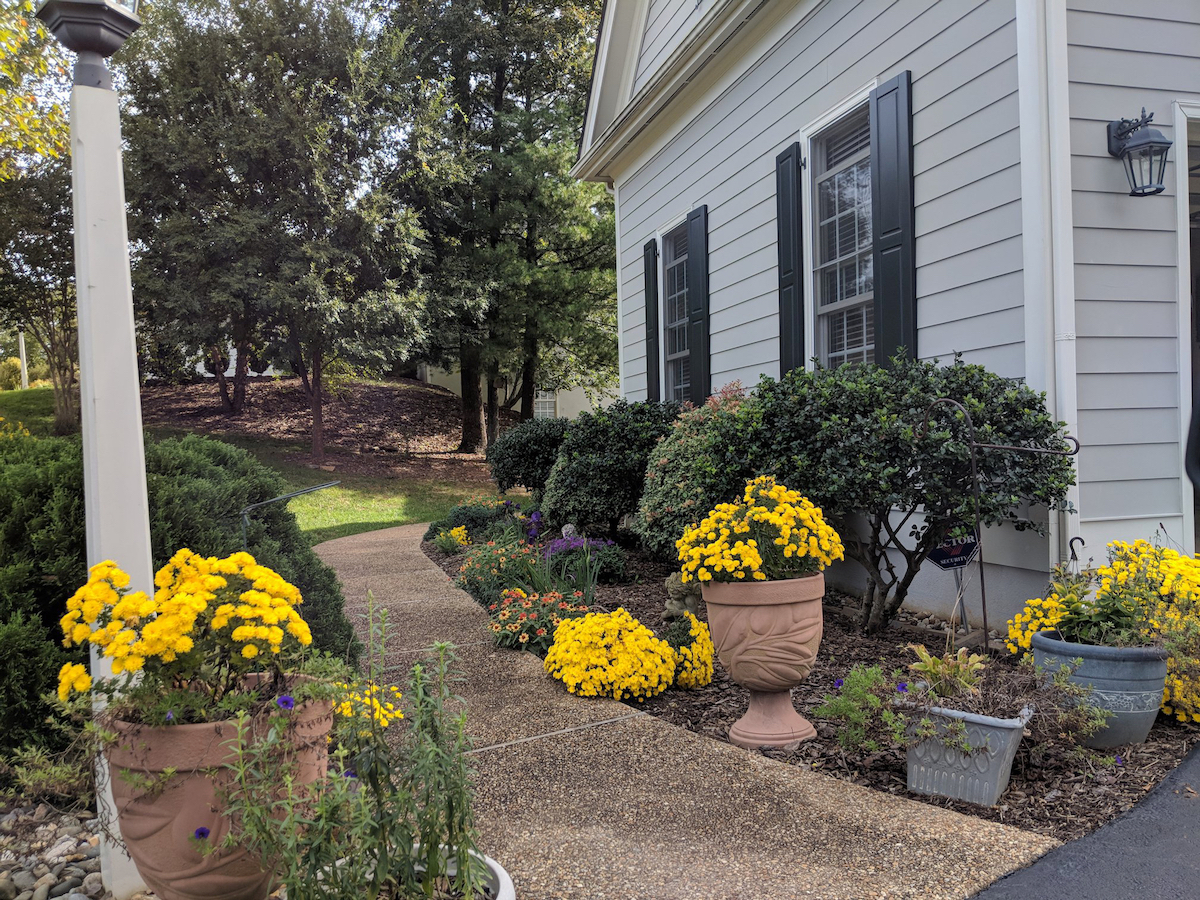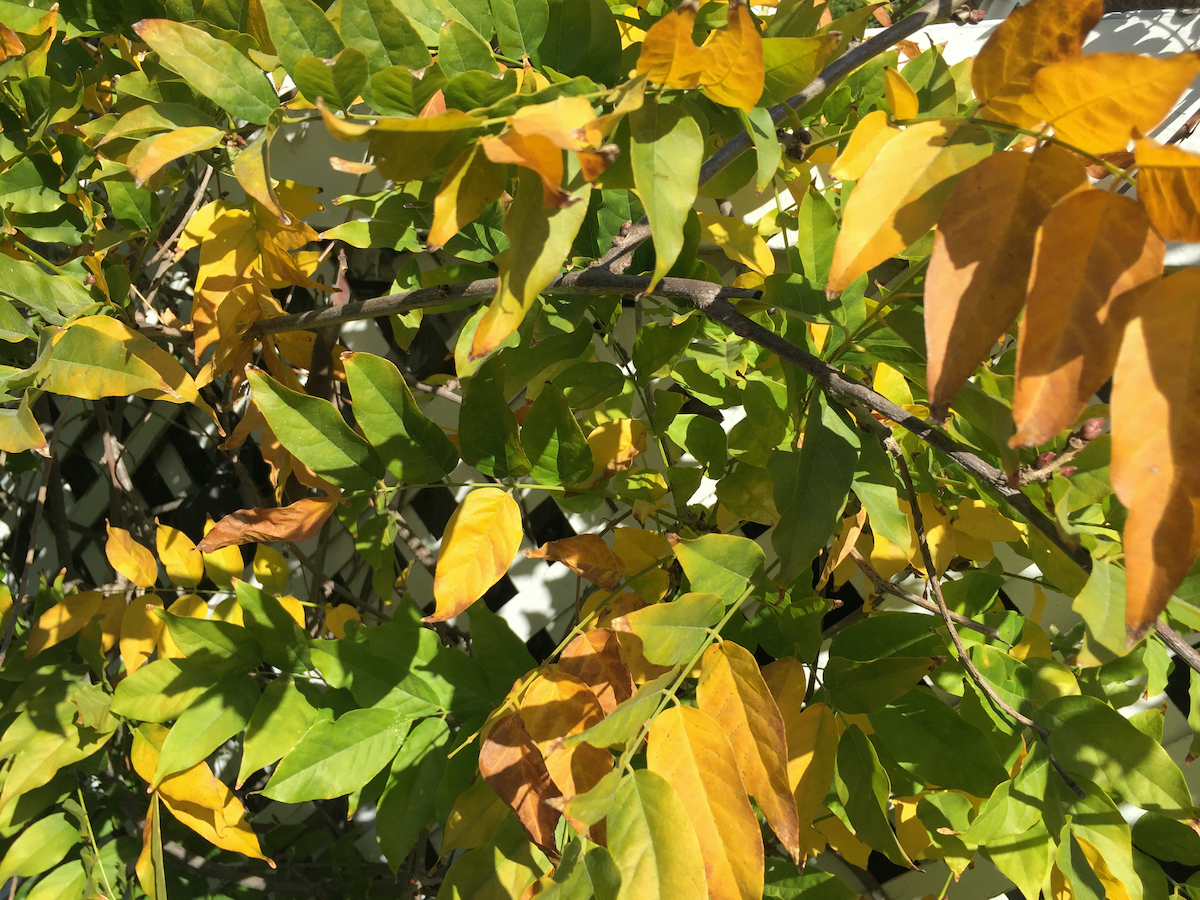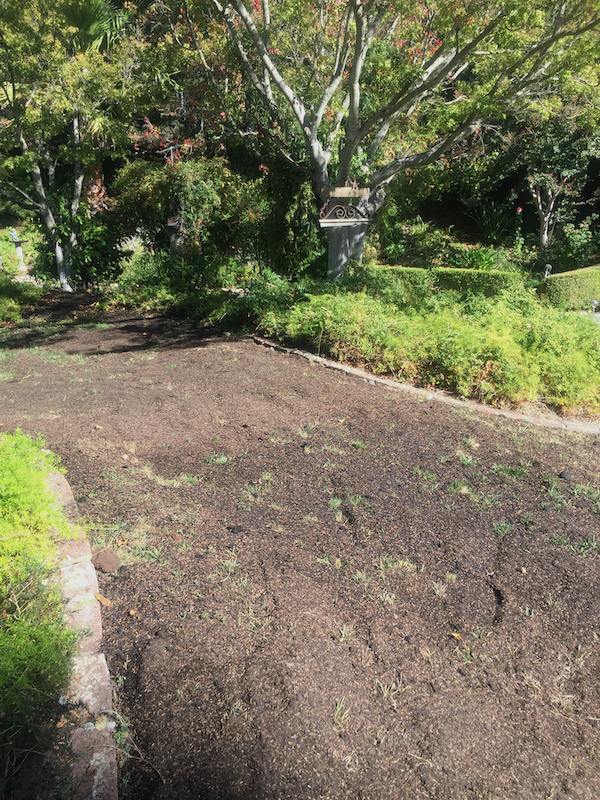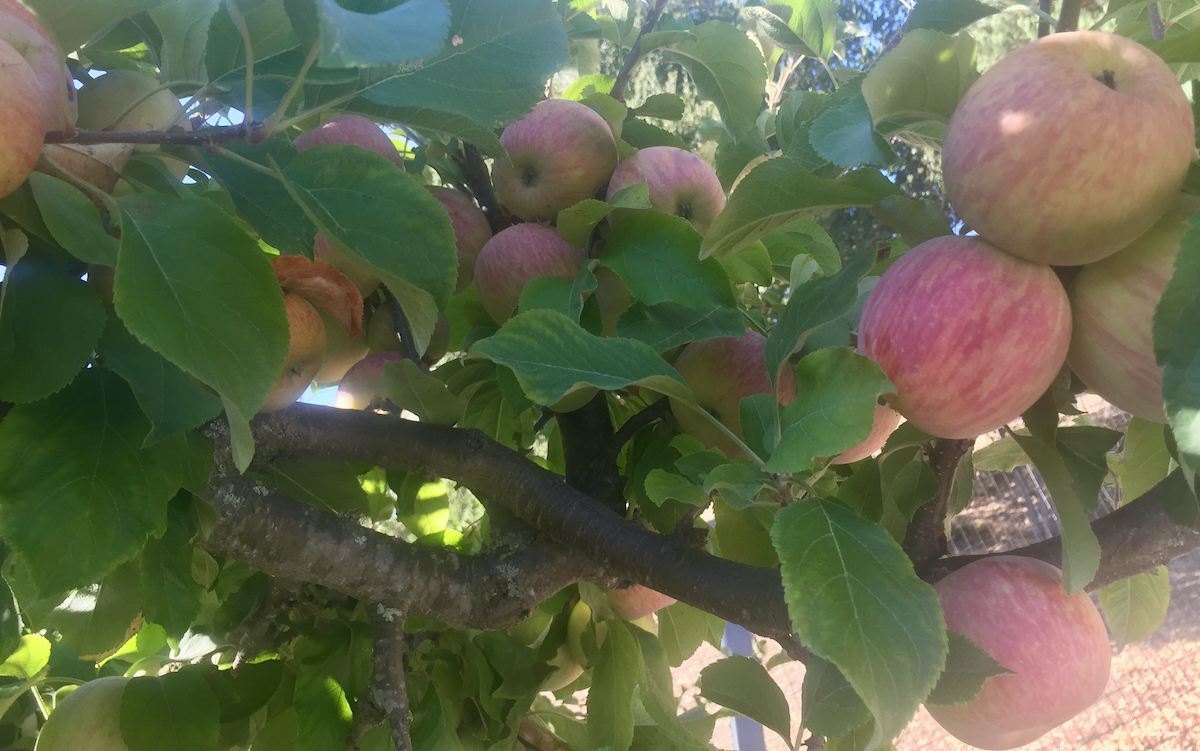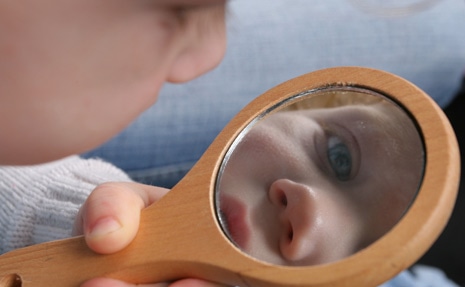“A friend may well be reckoned the masterpiece of nature.” Ralph Waldo Emerson
It’s only five in the evening and the darkness of night has arrived. I’ve been out in the garden prepping the soil as the sun sets and the moon rises. Normally by this time of the year, I would have had all my spring bulbs and perennials planted and my lawn re-seeded. But we have had no rain and the daytime temperatures are still too warm to guarantee any success with these normal autumn chores.
My clay soil is clod dry and needs amending. I originally bought several bags of nutrient-rich soil, but soon realized that my garden required a truckload. I had ten yards of a high nutrient amendment comprised of compost, green waste, rice hulls, and chicken manure delivered to replenish the earth before planting. Although it will take me some time to add this fertility to my soil, my lawn, trees, established and new plants will be thanking me.
As the world turns the leaves on our deciduous trees to reds, ambers, and golds, this is a perfect time to replenish your mulch and enrich your soil. If your garden is small, you can buy bags of amendments at your garden center or hardware store, but if you have a large property as I do, it is best to order a truckload. Most bags of mulch or compost are comprised of one to three cubic feet. Truckloads are sold by the yard. One cubic yard is 27 cubic feet making a truckload massively less expensive, although more wheelbarrow and muscle intensive. A variety of mixtures are available including aged wood fines, grape compost, sandy loam, red lava, and fir bark. All will help loosen clay soils and all will provide moisture retention, erosion control, and fertilization to landscapes before winter arrives. Be aware that when used in containers, runoff may cause stains.
I consider these special soils to be the best friends in my garden. As with building a house, the strength of the foundation of your garden will ultimately determine the success of your plantings. Besides spreading this mulch throughout my property, my plan is to mow my lawn, water it deeply, scatter lawn seed, and cover with a layer of this rich amendment. By adding these nutrients now, my garden will be ready for a winter nap and re-emerge in spring in full glory.
The changing of the colors of autumn leaves is later this year than any previous year. My trees usually begin their transformation in October, but this year, I began witnessing the stunning procession in November. The deep reds we witness are a result of an increase in the sugar content while the yellows are a diminishment of chlorophyll due to the sunny days of autumn combined with the cooler evening temperatures. Most people believe it is the changing of seasons that cause the leaves to turn. Although the chilly nights do deserve some credit for the rapid foliage change, the true reason that the leaves change color is dependent on species and environment. Japanese maples, dogwoods, liquid ambers, and some species of crepe myrtle appear flaming while redbud, ginkgo, birch, apple, wisteria, and larch shimmer in yellows and gold. Oaks change to russet, Chinese pistache herald pumpkin orange hues.
My personal favorite is to watch the veins on the leaves of my grape vines change from deep greens to multi-hued magnificence.
Also, Boston ivy and Virginia creeper offer dazzling autumn shades. They secrete calcium carbonate which creates an adhesive pad that allows them to attach to walls. If you wander the creeks or hillsides, beware of poison oak as it is one of the most gloriously colored vines of autumn melding crimson, sienna, and scarlet. As the days grow shorter and the nights linger longer, the biochemical process paints nature’s landscape with a sunset palette. Cut a few branches from your favorite specimens to create indoor autumn displays. I also dry Japanese maple and liquid amber leaves and add them to my fall potpourri mixes.
As leaves fall to the ground, rake them into your compost pile. The decomposition replenishes the nutrients in your soil. Dispose of diseased or bug-infested leaves, such as those that have peach leaf curl, rust, or aphids.
As the growing season comes to an end, collect the seedpods from companion flowers to attract beneficial insects for next season’s plantings including dill, caraway, anise, alyssum, marigolds, calendulas, sunflowers, zinnias, hollyhock, and nasturtium. Dry them on cookie sheets or in plain brown paper bags providing plenty of air circulation. Store in paper bags, labeling with name and date. You’ll be ready to plant the seeds next spring. The goal is to attract beneficial insects, bees, butterflies, and hummingbirds and keep them alive and healthy.
To crank up the curb appeal to your home, include colorful containers of mums or design an autumn arrangement of gourds and pumpkins at your front entrance. Thanksgiving is fast approaching and even if we won’t be hosting our normal festivities, our neighbors will enjoy the picture-perfect personality.
Discover your nature friends and applaud them as masterpieces.
Cynthia Brian’s Digging Deep Gardening Guide for November
BUY soil amendments by the bag or by the yard to enrich your soil before winter rains.
VISIT your local nursery to choose shrubs, trees, and bushes with colorful deciduous leaves that you want to showcase in your garden.
DEADHEAD rose blooms to encourage a couple more budding flourishes before January pruning.
DIVIDE daylilies, bearded iris, and plant spring-blooming bulbs.
PRUNE dead branches from small trees and call an arborist to check larger specimens.
FERTILIZE roses, citrus, and begonias,
RAKE leaves into a compost pile or bin.
RESEED tired lawns.
HARVEST apples.
ADD shredded newspaper to your compost pile. The zinc in the ink adds nutrients and the paper will decompose.
ROOT winter crop seedlings. I planted Brussel sprouts, Swiss chard, sugar snap peas, and kale and sowed seeds of arugula, greens, and lettuce.
©THROW seeds of a cover crop over vegetable gardens to restock nutrients for next season. Vetch, clover, mustard, beans, and peas are excellent choices.
MAINTAIN fire precautions around the perimeter of your property and home as fire season is still with us.
PREPARE your birdhouses for overwintering feathered friends.
See Photos and more: https://www.lamorindaweekly.com/archive/issue1419/Digging-Deep-with-Goddess-Gardener-Cynthia-Brian-As-the-leaves-turn.html
History is Made: https://www.vapresspass.com/2020/11/11/history-is-made-healing-is-necessary-have-hope/
Happy Growing. Happy Gardening.
Cynthia Brian
©2020
Cynthia Brian, The Goddess Gardener, is available for hire to help you prepare for your spring garden. Raised in the vineyards of Napa County, Cynthia is a New York Times best-selling author, actor, radio personality, speaker, media and writing coach as well as the Founder and Executive Director of Be the Star You Are!® 501 c3. Tune into Cynthia’s StarStyle® Radio Broadcast at www.StarStyleRadio.com.
Buy copies of her best-selling books, including, Chicken Soup for the Gardener’s Soul, Growing with the Goddess Gardener, and Be the Star You Are! Millennials to Boomers at 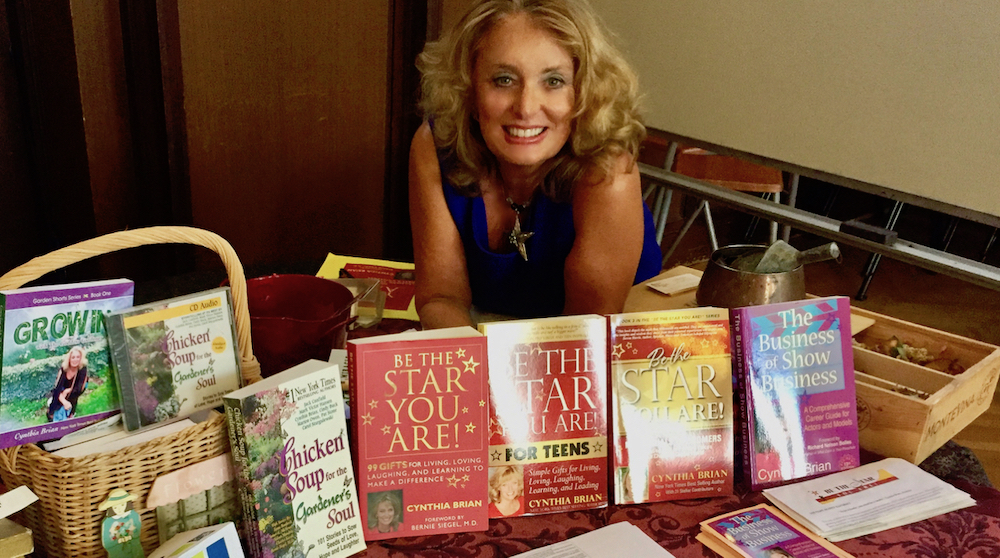 .
.
Hire Cynthia for writing projects, garden consults, and inspirational lectures.
Cynthia@GoddessGardener.com


